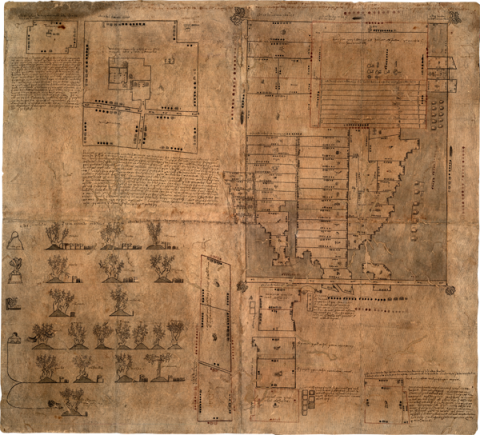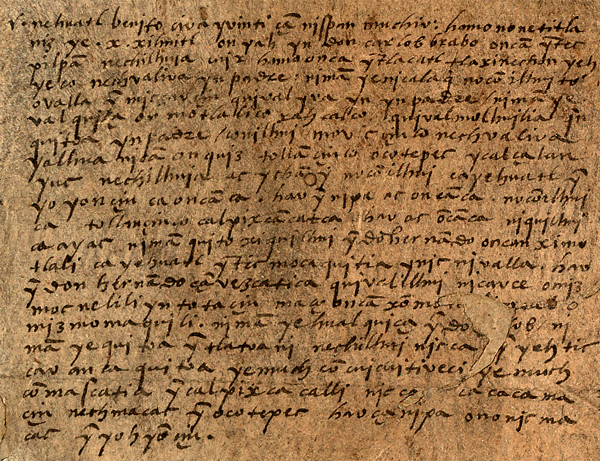The original manuscript, the Oztoticpac Lands Map, measuring approximately 76 by 84 cm. and drawn on native fig-bark paper (amatl), dates from sixteenth-century Tetzcoco, apparently from the 1540s. It was probably prepared for litigation in the courts of New Spain in the wake of the execution for “idolatry” of one of its principal figures. The Oztoticpac Lands Map features the properties that once belonged to a don Carlos Ometochtli Chichimecatecutli (or Chichmecatecolotl) and his half brother Fernando Cortés Ixtlilxochitl, two nobles who were the sons of Nezahualpilli Acamapichtli, a famous Acolhua lord. It was don Carlos’ execution that provided a need to clarify and distribute his estate.
The Oztoticpac Lands Map, which not only provides details of noble lands and palaces but also the parcels of macehuales (indigenous commoners), somehow ended up in the Library of Congress, in the Division of Geography and Maps (with the call number 247). Its provenance is unknown, but the Library may have acquired it as early as 1905. It came to the attention of the Director of the Hispanic Division at the Library, Howard F. Cline, in 1965. Cline was the first scholar to complete an intensive investigation of its contents, which he published in 1966 and 1968.
While a facsimile with zoom capability is already being hosted on line by the Library of Congress
The largest part of the document consists of black-and-red line drawings that depict fields with indicators of their measurements and ownership, houses, other buildings, and trees. Measurements and names are given in pictographic writing, or glyphs. In one outer corner of the map, the viewer sees twenty trees that were grafted with European fruits, including apples, quinces, pears, grapes, and pomegranates.
The study by Noguez is available free on line:
The World Digital Library provides a virtual facsimile that can be downloaded, along with an introduction with additional information than we have provided here. See: http://www.wdl.org/en/item/106/
See also: http://www.myloc.gov/Exhibitions/EarlyAmericas/ExplorationsandEncounters...
(Stephanie Wood)









